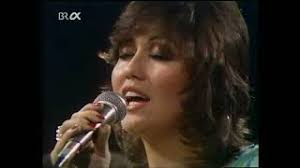This artistic, cultural, educational and tourist event sets an important precedent, because although it is only two days, Friday 5 and Saturday 6 September 2025, the lineup it presents is extraordinary, worthy of calling it: The Great Musical Reunion: Jersey City Latin Jazz Festival 2025.
Just like in the old days, Jersey City will host top stars representing Latin Jazz, all gathered together to thank and celebrate their fans and enthusiasts of our music.
Of course, not everyone will be there; their time will come, but there's no doubt about the effort to bring them together.
We hope this festival will spark new ideas and renew other festivals in our musical genre.
Jersey City Latin Jazz Festival 2025 Program:
Friday, September 5, 2025
- 6PM - Dave Schumacher & Cubeye - RWJ Barnabas Plaza Stage
- 7PM - Alex "Apolo" Ayala & The Bámbula Project - RWJ Barnabas Plaza Stage
8PM - Circle 9 Presents: Doug Beavers ‘Titanes del Trombón’ – tribute to John ‘Dandy’ Rodriguez - RWJ Barnabas Plaza Stage
Saturday, September 6, 2025
- 2PM - UCMP Latin Jazz - RWJ Barnabas Plaza Stage
- 3PM - WBGO Music for Kids Series featuring Juanga Lakunza - Courtyard Stage
- 4PM - John Benitez - RWJ Barnabas Plaza Stage
- 5PM - Chembo Corniel Quintet - Courtyard Stage

- 6PM - Bobby Sanabria & Ascension - RWJ Barnabas Plaza Stage
- 7PM - Melvis Santa - Courtyard Stage
- 8PM - The Palmieri Experience presented by Luques Curtis - RWJ Barnabas Plaza Stage
- 2-6PM - Kids Activities - Jersey City Free Public Library Community Zone
- 4-7:30PM - Dance Lessons by Salsa Fever on2 - Owen J. Grundy Pie
The event will feature 10 bands including tributes to Eddie Palmieri and John “Dandy” Rodriguez that include many past members of their groups. The event will take place at Exchange Place Plaza on the Hudson River waterfront on Friday, September 5 from 6pm to 10pm and Saturday, September 6 from 2pm to 10pm. The festival is free-to-the-public and is presented by Exchange Place Alliance.
“This year is an incredibly special year. We will be honoring two absolute titans of Afro-Cuban music that have left an indelible mark not only on our festival, but a worldwide influence on music in general” says festival director Bryan Beninghove. “So many musicians in our community have played, recorded, or have been directly influenced by Eddie Palmieri and Dandy Rodriguez. It’s going to be a real honor to have all these members of their bands there to celebrate their lifetimes of music.”
On Friday, September 5 three bands will perform on the RWJ Barnabas Plaza stage. They include the horn-driven septet Dave Schumacher & Cubeye (6pm), bassist Alex “Apolo” Ayala & the Bámbula Project (7pm), and Doug Beavers “Titanes del Trombón” Tribute to John “Dandy” Rodriguez (8pm). The early afternoon of Saturday, September 6 will have plenty of kids’ activities including performances by the United Children’s Music Project Latin Jazz Ensemble (2pm) and the WBGO Music for Kids series featuring trombonist Juanga Lakunza’s History of the Clave (3pm). At 4pm the great bassist John Benitez (also a Palmieri alum) will lead his ensemble, followed by the hard-hitting percussionist Chembo Corniel’s Quintet (5pm). At 6pm the 7-time Grammy nominee, percussionist, and WBGO on-air personality Bobby Sanabria will perform with his group Ascension, followed by the Cuban-born pianist/vocalist and Jersey City resident Melvis Santa (7pm), fresh off her tour with the iconic saxophonist Kenny Garrett. Closing out the festival will be the Palmieri Experience at 8pm presented by Luques Curtis and will feature many members of the late great maestro’s band.
Eddie Palmieri, the dynamic musical innovator who shaped Latin music perhaps more than any other artist, passed away on August 6, 2025. He was a fiery performer that fused jazz, R&B, and traditional Latin music to create the sounds that ushered in the heyday of the Salsa era. Palmieri performed at the 2023 Jersey City Jazz Festival with Sonido Solar. Bassist Luques Curtis had been performing with Palmieri for years and will be leading the ensemble for the tribute.
“Everyone in this group has played a vital role in Eddie Palmieri’s legacy” says Curtis. “He has profoundly shaped each of our careers, giving us all the chance to grow and shine. We’re deeply grateful for the opportunity to present this tribute and honor the greatest bandleader, mentor, and friend anyone could ask for.”
John “Dandy” Rodriguez was one of the world’s leading percussionists, having long played bongo with the likes of Tito Puente, Willie Bobo, Johnny Pacheco, Celia Cruz, and many more. Dandy had performed annually at Riverview Jazz events since 2016 and often with trombonist and Circle 9 record label founder Doug Beavers.
“I met Johnny Rodriguez serendipitously back in 2000 when I was called to arrange for and ultimately perform with Eddie Palmieri’s La Perfecta II band, where he was playing bongos,” recalls Beavers. “What blows my mind now in 2025 is that I was sitting in the midst of so much legacy and history from these two combined icons of salsa music and Latin Jazz – together they performed with all of the founders: Tito Puente, Machito, Tito Rodriguez, Celia Cruz, Cachao, Johnny Pacheco, Típica ‘73…the list goes on and on.”
Beavers continues, “The tradition lives on with all of us who had the opportunity (and luck) to learn from both of these legends of our music. Most interestingly – or perhaps by fate – on September 5th and 6th, we disciples of both Eddie and Johnny will find ourselves in the unique position to celebrate both of these icons here right here at Jersey City Latin Jazz Festival.”
Viva The Latin Jazz!!
www.jazzcaribe.blogspot.com
jazzcaribe2001@yahoo.com
Note: The bestselling book "The Bible of Latin Jazz" by musicologist, writer, and educator Luis Raul Montell is available on Amazon



































